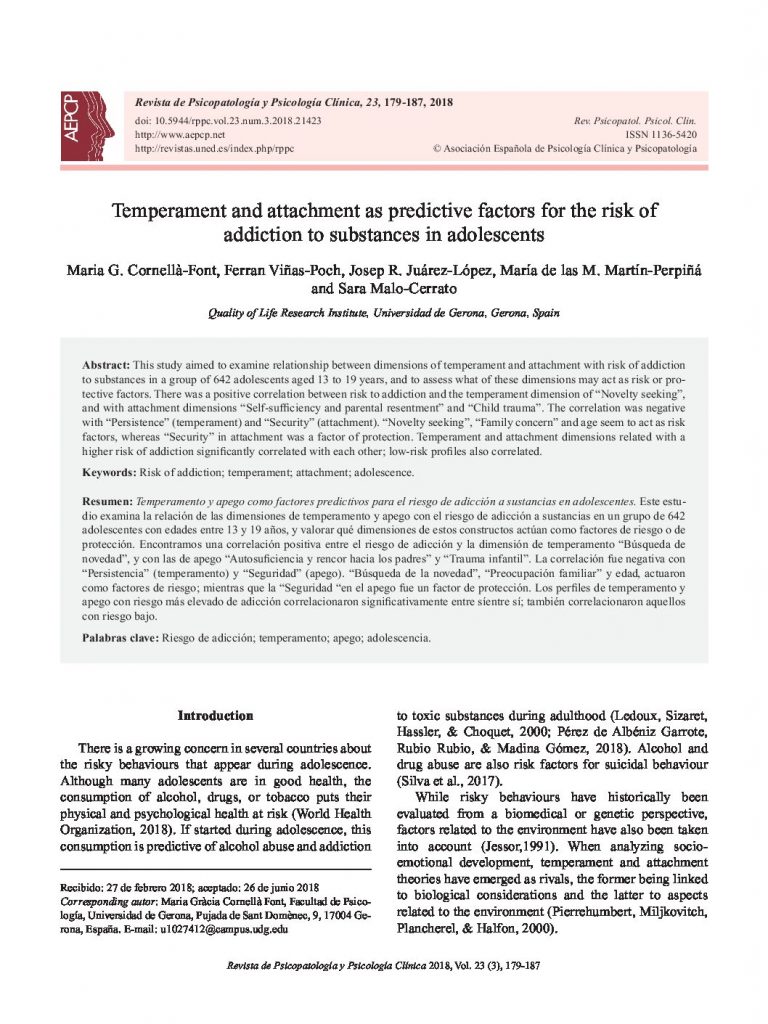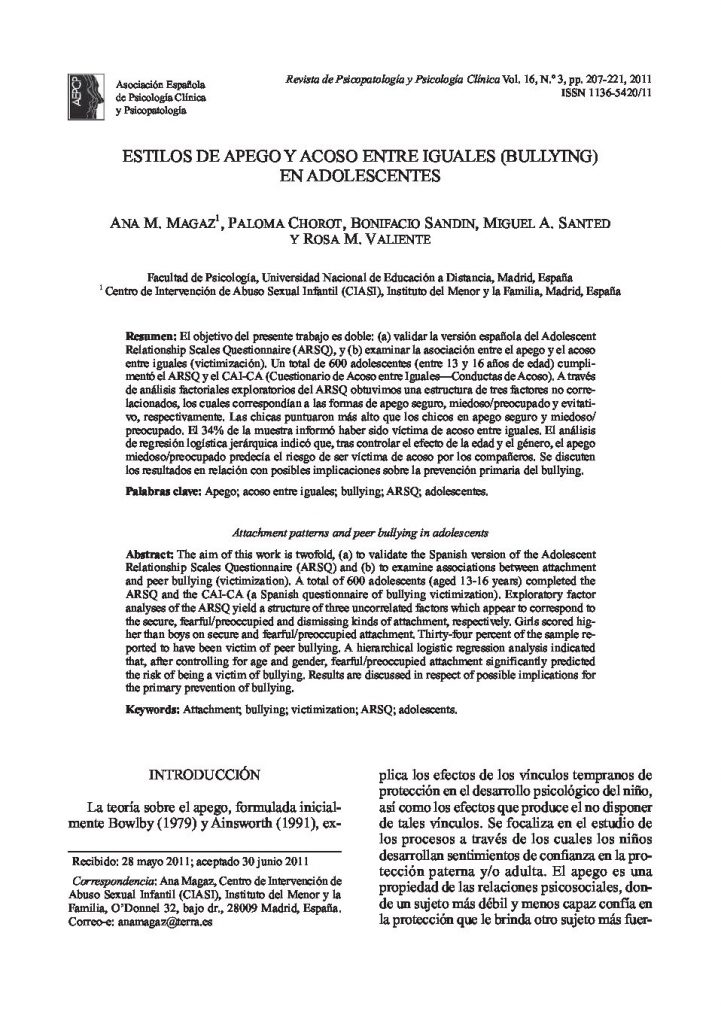Temperament and attachment as predictive factors for the risk of addiction to substances in adolescents.

- Escala de Síntomas de los Trastornos de Ansiedad y Depresión (ESTAD): Datos preliminares sobre su estructura factorial y sus propiedades psicométricas.
- Temperament and attachment as predictive factors for the risk of addiction to substances in adolescents.
- Conducta autolesiva no suicida en adolescentes y su relación con factores personales y contextuales.
- Efectividad y aceptabilidad del entrenamiento en habilidades de la terapia dialéctica comportamental para familiares de personas con trastorno de personalidad límite.
- Rasch model analysis of the Brief Version of the Social Phobia and Anxiety Inventory (SPAI- B) in Argentinean and Spanish samples.
- Información sobre los indicadores métricos de la Revista de Psicopatología y Psicología Clínica.
- Variables de riesgo y protección relacionadas con la tentativa de suicidio.
- Adaptación del Cuestionario para Identificación de Trastornos Debidos al Consumo de Alcohol (AUDIT) en universitarios colombianos.
This study aims to examine relationship between dimensions of temperament and attachment with risk of addiction to substances in a group of 642 adolescents between 13 and 19 years old, and to assess what of these dimensions may act as risk or protective factors. There was a positive correlation between risk to addiction and the temperament dimension of “Novelty seeking”, as well as with attachment dimensions of "Self-sufficiency and parental resentment" and "Child trauma". The correlation was negative with "Persistence" (temperament) and "Security" (attachment). "Novelty seeking", "Family concern" and age seem to act as risk factors, whereas “Security” in attachment was a factor of protection. Temperament and attachment dimensions related with a higher risk of addiction significantly correlated with each other.
Este estudio examina la relación de las dimensiones de temperamento y apego con el riesgo de adicción a sustancias en un grupo de 642 adolescentes de entre 13 y 19 años, y valorar qué dimensiones de estos constructos actúan como factores de riesgo o de protección. Encontramos una correlación positiva entre el riesgo de adicción y la dimensión de temperamento “Búsqueda de novedad”, y con las de apego “Autosuficiencia y rencor hacia los padres” y “Trauma infantil”. La correlación fue negativa con “Persistencia” (temperamento) y “Seguridad” (apego). “Búsqueda de la novedad”, “Preocupación familiar” y edad, actuaron como factores de riesgo; mientras que la “Seguridad “en el apego fue un factor de protección. Los perfiles de temperamento y apego con riesgo más elevado de adicción correlacionaron significativamente entre sí.




